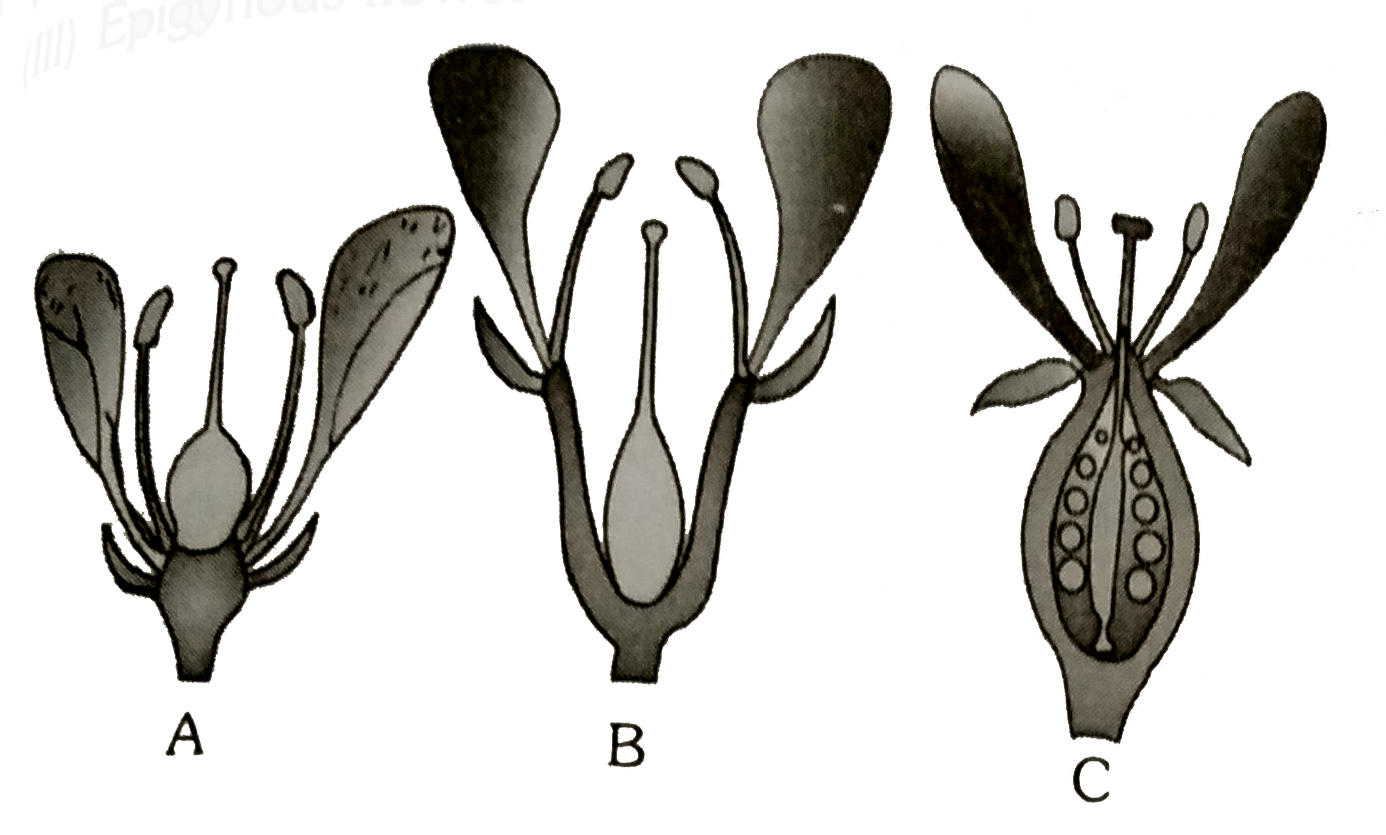Choose the correct characters related to Brassica (Mustard)
I) Actino morphic flowers
II) Hypogynous flowers
III) Variation in length of stamens
IV) Parietal placentation
V) Fused carpels
All are correct except V
All are wrong except IV
III, IV correct, I, II, V wrong
All are correct
The correct Answer is:D
To determine the correct characters related to Brassica (Mustard), we will analyze each of the given statements one by one based on the floral morphology of Brassica.
1. Actinomorphic Flowers:
- Brassica flowers exhibit radial symmetry, meaning they can be divided into identical halves through multiple planes. This characteristic qualifies them as actinomorphic flowers.
- Conclusion: This statement is correct.
2. Hypogynous Flowers:
- In Brassica, the ovary is positioned above the other floral parts, which is indicative of a hypogynous flower. This means that the gynoecium (the female reproductive part) is superior.
- Conclusion: This statement is correct.
3. Variation in Length of Stamens:
- Brassica flowers have a unique arrangement of stamens where there are two long stamens and four shorter stamens. This variation in length is a distinctive feature of the Brassica flower.
- Conclusion: This statement is correct.
4. Parietal Placentation:
- In Brassica, the ovules are arranged along the inner walls of the ovary, which is characteristic of parietal placentation. This means that the ovules are not located in the center of the ovary but rather along the periphery.
- Conclusion: This statement is correct.
5. Fused Carpels:
- Brassica flowers have carpels that are fused together, which is indicated by the presence of a bracket in the floral formula. This condition is referred to as syncarpous, meaning the carpels are not free but are joined.
- Conclusion: This statement is correct.
Final Answer:
All the given characters (I, II, III, IV, V) are correct for Brassica (Mustard). Therefore, the correct answer is D) All are correct.
- Brassica flowers exhibit radial symmetry, meaning they can be divided into identical halves through multiple planes. This characteristic qualifies them as actinomorphic flowers.
- Conclusion: This statement is correct.
- In Brassica, the ovary is positioned above the other floral parts, which is indicative of a hypogynous flower. This means that the gynoecium (the female reproductive part) is superior.
- Conclusion: This statement is correct.
- Brassica flowers have a unique arrangement of stamens where there are two long stamens and four shorter stamens. This variation in length is a distinctive feature of the Brassica flower.
- Conclusion: This statement is correct.
- In Brassica, the ovules are arranged along the inner walls of the ovary, which is characteristic of parietal placentation. This means that the ovules are not located in the center of the ovary but rather along the periphery.
- Conclusion: This statement is correct.
- Brassica flowers have carpels that are fused together, which is indicated by the presence of a bracket in the floral formula. This condition is referred to as syncarpous, meaning the carpels are not free but are joined.
- Conclusion: This statement is correct.
All the given characters (I, II, III, IV, V) are correct for Brassica (Mustard). Therefore, the correct answer is D) All are correct.
Similar Questions
Match the following figures I,andIIandIII
(I) Hypogynous
(II) Perigynous flower
(III) Epigynous flower

View SolutionSelect the correct statement regarding Cyathium inflorescence
I) Single fruit develops from it
II) Presence of achlamydeous and unisexual flowers
III) Many stamens are present in a single male flower
View Solution
Knowledge Check
Flowers of Mustard resemble Makoi in
I) Number of Stamens
II) Number of Carpels
III) Placentation
IV) Superior ovaryAI, IIBII, IIICII, IVDI, IVThe characters found in Cucumber among the following are
I) Stem tendrils II) Epigynous flower
III) Pepo IV) Trilocular ovaryAI and II onlyBI and IV onlyCI, II and III onlyDI, II, III and IVStudy the following statements and choose the correct answer :
I. Cross -pollinating flowers have exotrose anthers .
II. Samara is a type of fleshy fruit.
III. Marginal placentation has a monocarpellary , unilocular ovary .
IV. Opposite phyllotaxy is seen in guava.AII and IV are correct but I and II are wrongBII and I are correct but III and IV are wrongCI, II and IV are correct but III is wrongDIII and IV are correct but I and II is wrong
Read the following statements and find out the incorrect statement.
a. Mustard has hypogynous, actinomorphic flower, parietal placentation, syncarpous gynoecium and belongs to family Brassicaceae
b. China rose has superior ovary, twisted aestivation, monodephous stamens and axile placentation
c. Pea has bilateral symmetry, vexillary aestivation, diadelphous stamens, marginal placentation and belongs to family fabaceae
d. Chilli has radial symmetry, epipetalous stamen, swollen placenta, monocarpellary gynoecium and belongs to family solanaceae
e. Lily has actinomorphic flower, axile placentation, imbricate aestivation, tricarpellary and trilocular gynoeciom belonging to family liliaceae.
View SolutionChoose the correct statements.
1. Autogamy takes place only in cleistogamous flowers.
II. A plant with geitonogamy must possess unisexual flowers.
III. Allogamy takes place only in chasmogamous flowers
IV. A dioecious plant is always xenogamous
View SolutionWhat characters are associated with bean plant I. Cup-shaped thalamus. II. Odd sepal anterior. III. Actinomorphic flowers. IV. Axile placentation.
View SolutionChoose the incorrect statements
I In a normal bisexual flower, complete autogamy is rather rare
II. All plants having cleistogamous flowers are invariably autogamous
lll Wind pollination is common in grasses
IV. Hydrophily is common in flowering plants. The correct answer is
View SolutionChoose the correct from the below
The dimensions of chronology in Social Science are
(i) Duration
(ii) Distance
(iii) Location
(iv) Relation of time
View Solution

